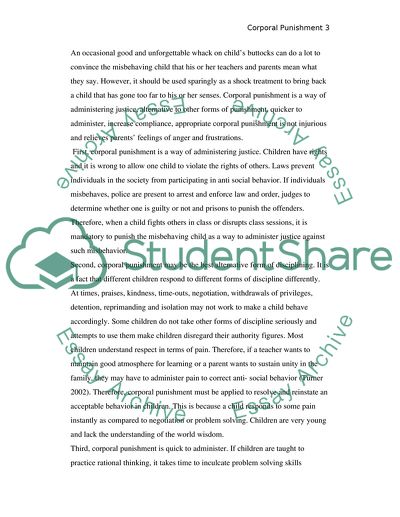Cite this document
(Discipline without Distress - Corporal Punishment Article, n.d.)
Discipline without Distress - Corporal Punishment Article. Retrieved from https://studentshare.org/law/1743846-the-impact-of-corporal-punishment-on-child-aggressive
Discipline without Distress - Corporal Punishment Article. Retrieved from https://studentshare.org/law/1743846-the-impact-of-corporal-punishment-on-child-aggressive
(Discipline Without Distress - Corporal Punishment Article)
Discipline Without Distress - Corporal Punishment Article. https://studentshare.org/law/1743846-the-impact-of-corporal-punishment-on-child-aggressive.
Discipline Without Distress - Corporal Punishment Article. https://studentshare.org/law/1743846-the-impact-of-corporal-punishment-on-child-aggressive.
“Discipline Without Distress - Corporal Punishment Article”, n.d. https://studentshare.org/law/1743846-the-impact-of-corporal-punishment-on-child-aggressive.


